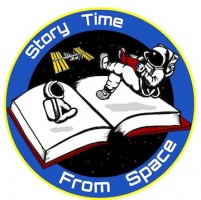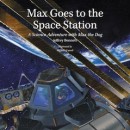A lot has happened since I last posted a Space News Update, so I’ll only be able to cover a few highlights, with a focus on upcoming events. Hope you find it useful. Contents:
- MAVEN — Next Mission to Mars Launches in November
- Story Time From Space — Launch in December
- The NEW Fiske Planetarium — Don’t Miss It
- Comet ISON — Coming Soon to the Sky Near You
- Scott Carpenter (1925–2013)
- Global Warming — Updated Primer
- Two New Books Available Nov. 1 — Max Goes to the Space Station; Math for Life (Updated Edition)
MAVEN — Next Mission to Mars Launches in November
The next NASA mission to Mars, called the Mars Atmosphere and Volatile Evolution Mission (MAVEN), is scheduled to launch on November 18 (and is fortunately exempted from the effects of the government shutdown). I’m particularly excited about this mission because it’s led by the University of Colorado, and one of the instrument leaders is my textbook co-author Nick Schneider. But more importantly, it should help answer some critical questions about the possibility of life on Mars.
The key issue concerns liquid water. Today, the atmosphere is too thin to allow liquid water to be stable; if you lived in a future Martian colony and took a cup of liquid water outside (make sure you have your spacesuit on!), the water would quickly either freeze or evaporate. But past Mars missions have made it very clear that Mars once had liquid water on its surface, which means it must have had a thicker and warmer atmosphere. The question, then, is Where did all the atmospheric gas go?
The leading hypothesis holds that much of the gas from the Martian atmosphere was stripped away by the “solar wind,” which consists of charged particles that stream outward from the Sun. A great deal of evidence shows that the Sun and planets were all born about 4 ½ billion years ago, and the planets were all hot inside when they were young. Interior heat can help a planet sustain a global magnetic field, and the magnetic field can protect a planet’s atmosphere from the effects of the solar wind. Indeed, this protective effect is very important to life on Earth, and we suspect that Mars once had a similarly protective magnetic field. So you can now see the outline of what we think happened to Mars:
- When Mars was young, it had an atmosphere that was thick enough to allow liquid water to be stable on the surface. Mars apparently had lakes, rivers, and possibly even oceans at that time, although there’s some debate about whether the water was constant or intermittent.
- For its first 1 to 2 billion years, Mars had a hot interior that helped generate a global magnetic field that protected its atmosphere from the solar wind.
- After that, however, the interior of Mars cooled to the point that its magnetic field turned off. The reason this happened to Mars but not Earth is because Mars is smaller, and smaller objects cool faster than larger ones.
- Once the magnetic field turned off, the solar wind gradually began to strip gas away, ultimately leaving Mars with the very thin atmosphere that it has today.
All the above seems to make sense, but did it really happen that way? MAVEN should find out. Scientists who study this hypothesis in detail have found that if it is correct, then Mars should have lost gas in some very particular ways. MAVEN will study the Martian atmosphere to learn about gas loss both past and present, and therefore should be able to determine whether the hypothesis checks out. If it does, it will give us greater insight into the Martian climate of the past, and therefore help us understand the prospects that Mars once had a stable enough climate to allow for an origin of life.
To learn more about MAVEN, visit the mission web site.
Question for Class:The MAVEN mission has only about a 3-week “launch window” for getting to Mars, and if it misses that window it would have to wait 2 more years for another try. Why? (Answer: Look at relative orbits of Earth and Mars. Earth takes one year to orbit Sun and Mars takes close to 2 years. Therefore, Mars and Earth line up on the same side of the Sun only about once every 2 years — and launch opportunities must be timed to take advantage of these closest approaches.)
Story Time From Space — Launch in December
In 2011, Astronaut Alvin Drew read Max Goes to the Moon aboard the final mission of the Space Shuttle Discovery (click here to find video and more info). As a follow-up to that reading, NASA and the Center for the Advancement of Science in Space (CASIS) are supporting a new program called Story Time From Space, in which astronauts will read books from the International Space Station, producing videos that will be freely available for anyone to view on the Web. I’m very honored that the Story Time From Space team has chosen my 5 children’s books as the first 5 books to launch, with launch currently scheduled for December from NASA’s Wallops Flight Facility in Virginia. The plan currently calls for a follow-up that will include the launch of a set of science demos designed by the Story Time From Space team to accompany the science lessons in the books. The demos and readings will then be linked up through curriculum materials and other resources designed to help improve math and science education.
Note: While NASA and CASIS are supporting the Story Time From Space project with the launch opportunity and the involvement of astronauts, the current budget situation means that they do not have funds available to support the associated curriculum development and other educational components of the program. Story Time From Space leader Patricia Tribe is therefore seeking private funding sources to support the program; if you are able to help or have ideas about how to help, please contact her directly: patricia.tribe@gmail.com.
The NEW Fiske Planetarium — Don’t Miss It
The University of Colorado’s Fiske Planetarium has just re-opened with a major upgrade that now makes it one of the most digitally advanced planetariums in the world. With an incredible programming staff and support from CU’s world-class faculty, the new Fiske has an unbeatable combination of science and education capabilities. If you are local or will be visiting Colorado, I urge you to come see a show at Fiske, and teachers can schedule school field trips. Learn more at the new Fiske web site.
Comet ISON — Coming Soon to the Sky Near You
As we move into November, it may become possible to see Comet ISON with the naked eye. Some astronomers are predicting a “comet of the century,” while others think it may largely fizzle out. Still, it should be at least somewhat visible, and might be spectacular. As the time draws nearer, you’ll undoubtedly see lots of news reports on viewing the comet. Meanwhile, I recommend in particular:
- Click here for general information about where and when to look for it.
- For a great post on what to expect or not expect, see Phil Plait’s Bad Astronomy blog.
Questions for Class:
- What is a comet? (Answer: a chunk of ice and rock, though not necessarily packed solid, that orbits the Sun. Comets are thought to be leftovers from the formation of our solar system.)
- What does a comet look like in our sky? (A: Comets that come close to the Sun can grow long tails, formed as a result of the vaporization of the ices that make up a comet. So in the sky, you’ll see the comet’s head or “coma,” with a long tail extending out from it. Only rarely do comets become bright enough to be seen with the naked eye, which is why we are hoping for something spectacular from comet ISON.)
- How does a comet move through our sky? (A: Slowly!!! Comets are actually moving very fast in their orbits around the Sun, but they are typically millions of miles from Earth, so they move only slowly relative to the stars; in a single night, you may barely notice a comet moving relative to the stars at all, which means you will see it rise and set along with the stars that appear near it.)
- Which direction does a comet’s tail point? (A: Away from the Sun. Many people are surprised by this, because they expect a comet tail to trail “behind” the comet as it moves around the Sun. Remember, however, that comets are out in the near-vacuum of space. Their tails (they actually have two main tails) are formed by material released from the comet, and this material is pushed in a direction away from the Sun by sunlight and the solar wind (see discussion of the solar wind under MAVEN mission above).
Scott Carpenter (1925–2013)
Mercury astronaut Scott Carpenter, the second American to orbit the Earth, passed away last week. I never met him, but I admired him on a great many levels; I also feel a special connection because he grew up in Boulder (where I live), and during the summers I swim regularly at Scott Carpenter Pool in Boulder’s Scott Carpenter Park. You might wish to read this article published in our local Boulder newspaper.
Global Warming — Updated Primer, Teaching Children
The latest IPCC summary report on global warming has been released, and as a result you will hear many news reports about it — with some questioning whether the threat is real. So for anyone with any questions about it at all, I have recently updated my Global Warming Primer. I hope you will find it useful.
I’ve also written a post on Teaching Children About Climate Change.
Two New Books Available Nov. 1 — Max Goes to the Space Station; Math for Life (Updated Edition)
My latest books for children and grownups will both publish officially on November 1. Here’s a brief bit of information:
- Max Goes to the Space Station: I wrote this prequel to Max Goes to the Moon at the request of the Story Time From Space team— which means the book is scheduled to be launched to the International Space Station in December, and to be read from orbit by one of the astronauts. More information and links for pre-order; also available in Spanish.
- Math for Life (Updated Edition): Do you want to understand why our government can’t seem to get its act together? In Math for Life, you’ll learn why many of the problems can be understood if you just look at the numbers; the book also discuss many other “math for life” issues including cell phones and driving, energy issues, population issues, and ways in which we can improve math education. More information and links for pre-order.
Note: If you really want to know how deeply our national problem of being “bad at math” goes, go about 3:34 into this Jon Stewart video and watch one of the top people from the IRS state that she’s “not good at math”!!!



